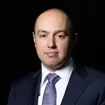- with readers working within the Banking & Credit and Insurance industries
Introduction
On Dec. 4, 2023, the US Supreme Court heard oral arguments in Harrington v. Purdue Pharma L.P., No. 23-124 (US argued Dec. 4, 2023), on whether a bankruptcy court may approve a Chapter 11 reorganization plan that non-consensually releases direct claims against non-debtor third parties. The Court's decision may dictate whether a third-party non-debtor will be able to discharge civil litigation claims without having to file for bankruptcy or follow Bankruptcy Code requirements. The Court considered extensively whether the Bankruptcy Code permits third-party releases under § 1123(b)(6) and looked at the impact of a ruling here on accepting and hold out creditors. The Court appeared divided (and not on typical ideological lines) making prediction of an outcome particularly difficult here. We expect a ruling before the end of the term in June 2024.
Background
Purdue Pharma, a manufacturer of branded opioid medications, including OxyContin, filed for bankruptcy on Sept. 15, 2019. The Company faced significant threats to its continued viability stemming from mass tort litigation over its marketing and sale of prescription opioid medications, including OxyContin.
The proposed chapter 11 plan sought to resolve the opioid litigation by incorporating a settlement framework that included a release of the family that owned the equity in Purdue, the Sackler family, in exchange for a lump-sum settlement payment of $4.325 billion at the time of confirmation. The Bankruptcy Court approved this Plan and entered a confirmation order on Sept. 17, 2021. Certain parties, including the US Trustee appealed the confirmation order. On appeal (from the District Court), the Second Circuit affirmed the bankruptcy court's confirmation of a chapter 11 reorganization plan containing nonconsensual releases of direct claims against third-party non-debtors, including the debtor's controlling owners, the Sacklers. After a subsequent appeal by the office of the United States Trustee, the US Supreme Court granted certiorari and teed up the hearing.
Analysis
In a "dramatic" argument, the court questioned the parties on four main issues: the interpretation of § 1123(b)(6) in the Bankruptcy Code; the legacy a ruling may leave for future liable companies and those impacted by mass tort; the difference between direct and derivative claims; and recoveries for the mass tort plaintiffs.
Statutory Interpretation. First, the justices tackled statutory interpretation. Justices Jackson, Kavanaugh and Gorsuch questioned the parties on the interpretation of the term "appropriate" in § 1123(b)(6) of the Bankruptcy Code. Section 1123(b)(6) states that a plan may "include any other appropriate provision not inconsistent with the applicable provisions of this title." Arguing on behalf of the US Trustee, the Deputy Solicitor General asserted that nonconsensual third-party releases are outside the scope of the term "appropriate." Counsel for the US Trustee argued that Congress did not intend for Bankruptcy Code § 1123(b)(6) to go beyond general principles of the Bankruptcy Code and allow bankruptcy courts to "simply redistribute others' private property rights" without consent.
Justice Kavanaugh asked counsel for the US Trustee to explain his position in light of decades of cases where claims against directors were indemnified by the debtor and therefore properly incorporated into the plan of reorganization. Counsel for the US Trustee argued that "[t]his [Plan] really sweeps much more broadly than that. It isn't just people who are directors and officers."
In contrast, counsel to Purdue emphasized flexibility, arguing that "'[a]ppropriate' is a term of classic breadth. It essentially gives the courts a common law role that while broad is part and parcel of what bankruptcy courts and equity courts have been doing for centuries in this context."
Justice Jackson, however, questioned counsel to Purdue on how the statutory context informs his interpretation of § 1123(b)(6), asking why in this case should the Court depart from its standard interpretation of statutory lists. Counsel to Purdue argued that §§ 1123(b)(1)-(5) work directly with § 1123(b)(6) in that each provision grants the authority needed by the bankruptcy court for a plan to be effective. Section 1123(b)(6) is the catch-all provision that encapsulates what is not specifically mentioned in §§ 1123(b)(1)-(5). Justice Gorsuch observed that counsel to Purdue's position lacked the support of a strong historical analogue. Not only was this issue the most significant point of questioning from the Court but also will likely be a deciding factor in the Court's opinion.
Impact on Future Mass Torts. Second, the Justices focused on how this case might impact future mass tort bankruptcies, with Justice Barrett inquiring into potential ramifications for victims in cases such as LTL Management.1 To resolve issues related to mass torts, counsel for the US Trustee suggested that Congress could step in "as it did with § 524(g) of the Bankruptcy Code which permits the resolution of mass torts related to asbestos litigation, and create a customized framework for some of these individual case[s]." Counsel to Purdue countered that should the Debtors' position not be validated, the Court would have to find § 524(g) unconstitutional, taking a "wrecking ball" to the asbestos bankruptcy carve-out and the rest of the Code.
Direct and Derivative Claims. Third, the justices spent considerable time questioning the parties about direct versus derivative claims. Both parties agreed that similar to direct claims, derivative claims belong to individual creditors under state law. However, upon filing for bankruptcy, the estate secures the exclusive right to litigate or settle such claims for the benefit of all creditors. Justice Sotomayor questioned counsel to Purdue on this distinction, noting that she did not understand why the personal injury claims were not derivative claims given that the defective product was sold by the corporation not the Sackler parties. Counsel to Purdue responded that, in this case, the direct claims were "functionally indistinguishable from the derivative claims," thereby making them dischargeable without consent under § 1123(b)(6), On rebuttal, counsel for the US Trustee argued that the derivative claims are ones that can be recovered from "... the corporation as a whole," and that, in this case, the mass tort plaintiffs' claims were direct, not derivative. Specifically with respect to the state government claims against the estate, counsel to the UCC explained the importance of the release, stating that if the release is eliminated each of the states' claims will be resurrected because they are direct claims.
Making Creditors Whole. Lastly, Justices Kavanaugh and Barrett asked the parties the best way to make mass tort victims whole once more. According to Justice Kagan, the trustee's position, and the position of the hold out creditors could be "standing in the way of [recovery] as against the huge, huge, huge majority of claimants who have decided that, if this provision goes under, they're going to end up with nothing." Counsel to Purdue suggested this as well, pointing out repeatedly that the Plan has the support of 97 percent of the voting plaintiffs. Counsel for the US Trustee responded that even in a situation where there was the hypothetical "nut-case holdout" who did not consent to the Plan, that holdout creditor should still have its day in court and should not be forced to relinquish its property rights in its claim as a non-debtor third party. Justice Jackson also pointed out that even if there are holdouts, the Sackler parties could still fund victims who do consent and litigate with any holdouts. Counsel to the UCC argued that the US Government's $2 billion super-priority claim against the Sacklers, if not discharged through the Plan, would flatten the estate, leaving little to nothing for the plaintiffs to collect.
Conclusion
As detailed above, the Court focused foremost on § 1123(b)(6) of the Bankruptcy Code and whether third-party releases are "appropriate" provisions to include in a plan. This, as well as the ideologically mixed nature of the arguments, suggests that any ruling here will focus narrowly on the propriety of the releases of direct claims at issue in this case – rather than a broader ruling on whether and when third-party releases are permitted broadly. The Plan proponents here faced heavy questioning on the propriety of these releases from the Court. However, the Court also placed some emphasis on the practical impact of this ruling. And the Court may be reluctant to undermine a plan with widespread consent and recovery for creditors.
Footnote
1. In re LTL Management, LLC, No. 22-2003, 2023 BL 28442 (3d. Cir. Jan. 30, 2023)
The content of this article is intended to provide a general guide to the subject matter. Specialist advice should be sought about your specific circumstances.



